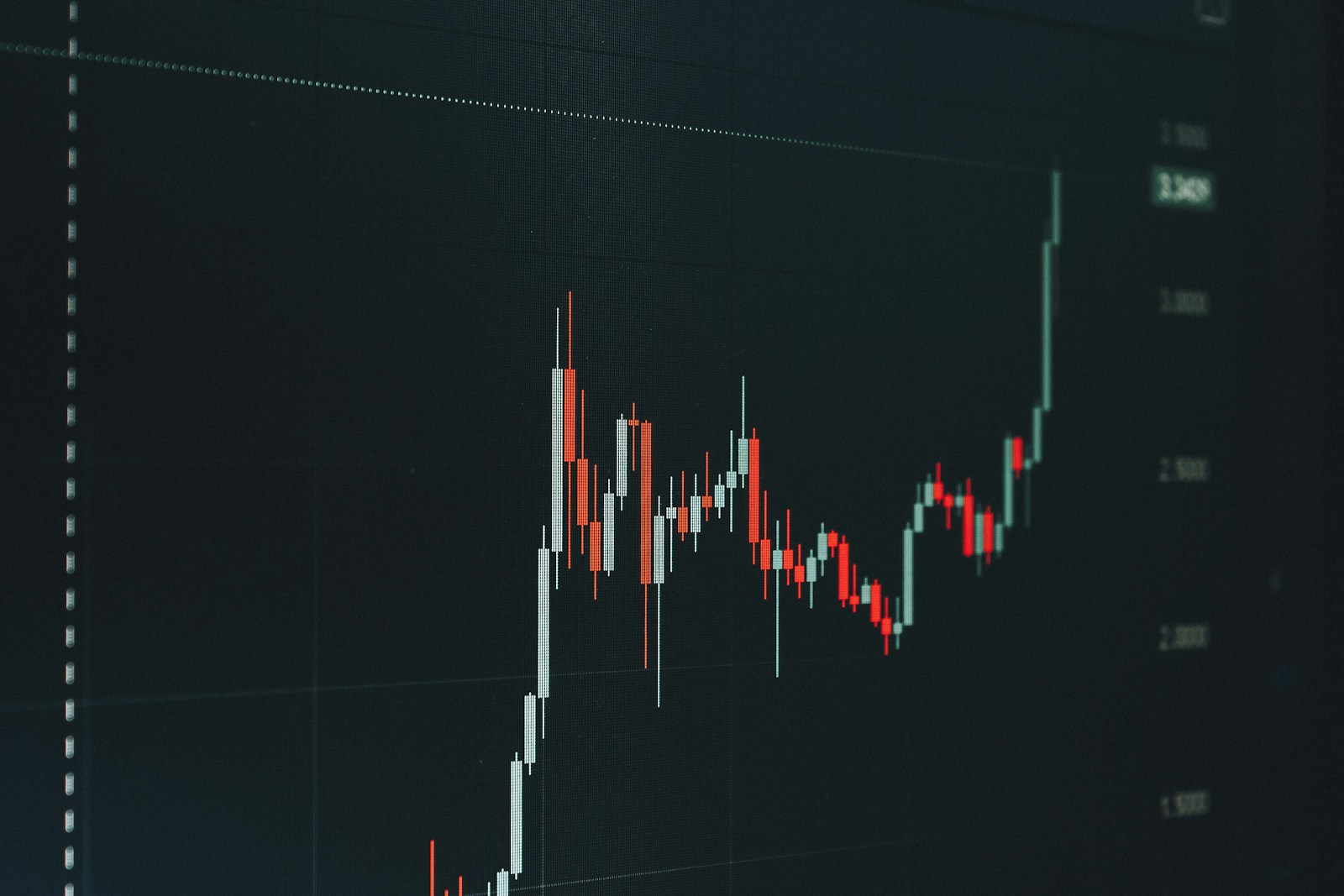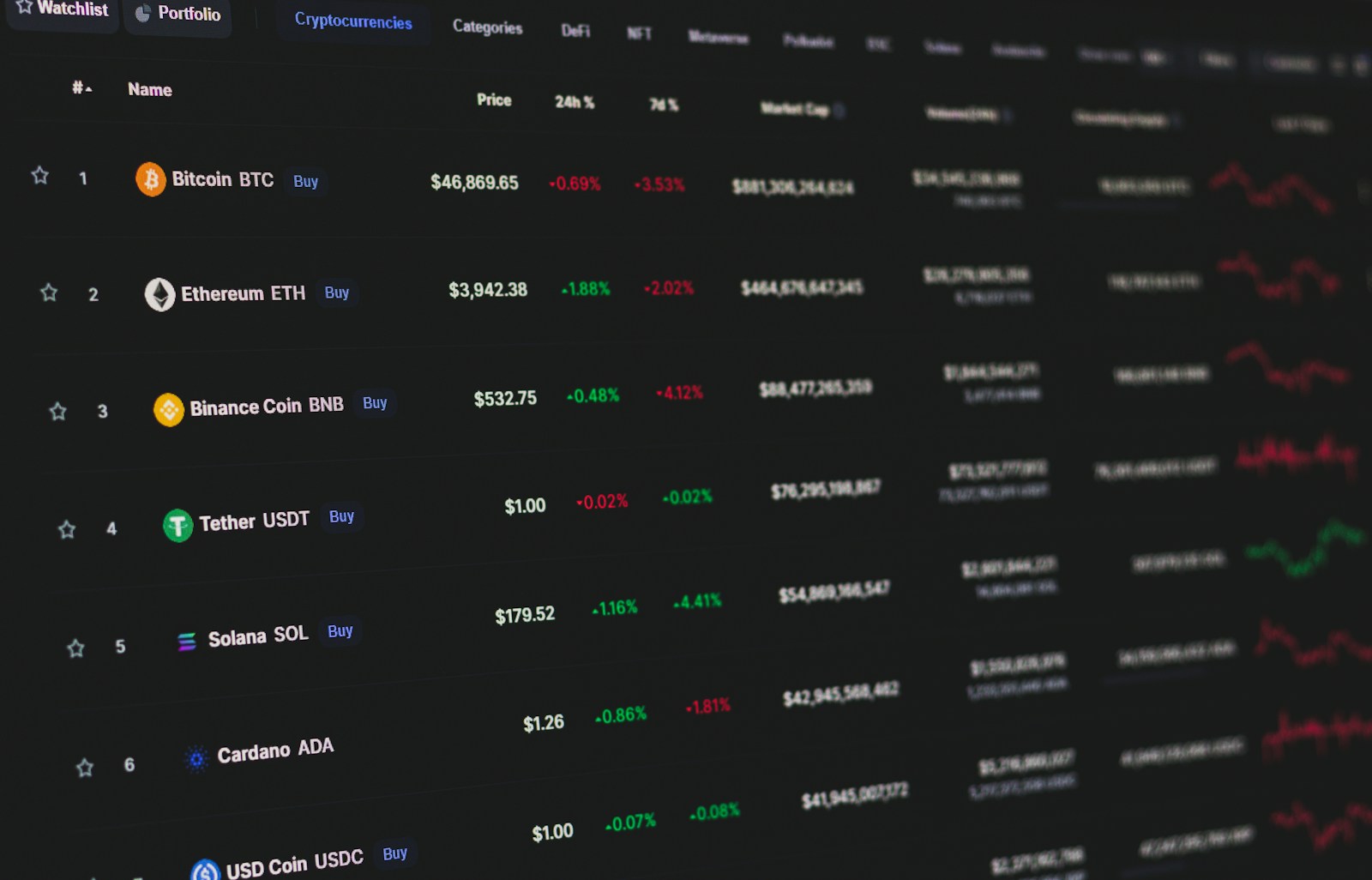
Optimizing returns in cryptocurrency validation requires a clear understanding of the current difficulty level, block incentives, and operational costs. For instance, Bitcoin’s mining difficulty recently surged by 8%, pushing average energy consumption per terahash higher. This shift directly impacts the net gains for miners, especially those operating with less efficient hardware. Evaluating reward schedules alongside electricity prices enables more precise forecasting of economic viability across different geographic regions.
The interplay between computational demand and participant scale shapes the ecosystem’s stability and rewards distribution. As more validators join, hash rate concentration increases, raising the challenge for individual nodes to secure new blocks. However, larger collective participation also strengthens protocol security, creating positive feedback loops that can incentivize further investment. This dynamic has been evident in Ethereum’s transition to proof-of-stake, where staking pools adjust returns based on total staked capital and network performance metrics.
Recent market trends highlight fluctuating profitability margins driven by token price volatility and shifts in consensus mechanisms. Miners must continuously reassess their position relative to these variables; otherwise, operational expenses may exceed earned compensation. Case studies from mid-2023 illustrate how sudden drops in coin value led some small-scale operators to cease activity temporarily until conditions improved. How can one balance equipment depreciation against potential future gains? Detailed financial modeling incorporating projected difficulty adjustments is indispensable for strategic decision-making.
Mining analysis: profitability and network effects [Market Analysis]
Evaluating the economic viability of cryptocurrency extraction requires a thorough examination of hardware efficiency, block incentives, and prevailing system difficulty. Recent benchmarks show that cutting-edge ASIC devices like the Antminer S19 Pro deliver hash rates exceeding 110 TH/s with power consumption around 3250 W, which directly influences operational expenses. When electricity costs in regions such as Texas or Kazakhstan average $0.03–$0.05 per kWh, miners can maintain positive returns only if reward values remain stable or increase.
The interplay between computational complexity and incentive structures heavily dictates revenue streams for participants. As more machines join the ecosystem, protocol adjustments automatically raise algorithmic hardness to preserve target block intervals. For instance, Bitcoin’s difficulty climbed by over 15% in the past quarter despite stagnant price levels, compressing margins for marginal operators and prompting consolidation among larger entities with economies of scale.
Technical insights into hardware impacts
Hardware selection profoundly affects net gains from hashing operations. Efficient chips reduce kilowatt-hour expenditure per terahash and extend lifecycle profitability amid rising competition. Comparing older generation models–such as Bitmain’s S9, which consumes about 1350 W at 13.5 TH/s–with newer iterations highlights substantial improvements in energy efficiency ratio (J/TH), pushing obsolete rigs out of the market faster than before.
Moreover, firmware optimization and cooling solutions contribute significantly to sustained output performance under heavy workloads. Case studies from large-scale farms indicate that even a 5% reduction in energy use can translate to millions saved annually when operating thousands of units simultaneously. Consequently, strategic upgrades are often justified based on long-term return projections rather than upfront capital alone.
The economics governing reward mechanisms also exhibit sensitivity to blockchain parameters beyond mere token price fluctuations. Adjustments in transaction fee accumulation during periods of high network usage amplify total revenue per validated block, occasionally offsetting declines caused by diminishing base rewards following scheduled halvings–events that have historically compressed incentives but stimulated innovation in operational efficiency.
- Recent data from Ethereum Classic shows how increased gas fees during DeFi surges temporarily elevated miner yields by up to 20%
- Conversely, steady-state conditions on networks like Litecoin demonstrate stabilization near breakeven points absent significant price appreciation
Ultimately, understanding how participant scale influences system-wide resistance to entry helps explain centralization trends observed across multiple protocols. Larger operators enjoy preferential access to discounted hardware procurement and bulk electricity contracts unavailable to smaller competitors who face higher effective costs per unit hash rate produced. This dynamic reinforces feedback loops where increased participation intensifies challenge ratings further disadvantaging newcomers.
Calculating Break-Even Points in Cryptocurrency Mining
To identify the break-even threshold in crypto validation, one must precisely measure operational expenses against generated revenue. Key variables include power consumption of hardware, current token valuation, and block reward dynamics. For instance, ASIC devices consuming 1400W at $0.10 per kWh incur daily electricity costs around $3.36; with a daily earning potential of $5 under present market rates and difficulty levels, the margin is slim but positive.
The complexity parameter directly influences output frequency by adjusting computational challenges network-wide to maintain block intervals. An increase in this metric reduces individual reward probability unless accompanied by proportional improvements in device efficiency or token price appreciation. The interplay between these elements dictates economic viability over time.
Factors Influencing Economic Feasibility
Hardware depreciation plays a pivotal role when evaluating payback periods. Cutting-edge rigs may cost upward of $12,000 with expected lifespan and performance degradation factored over 18 to 24 months. Parallelly, fluctuations in asset quotations can either compress or expand margins rapidly–illustrated by Bitcoin’s volatility swinging ±15% within weeks during recent cycles.
Additionally, network congestion and participant count exert pressure on returns through intensified competition and escalating complexity ratings. A surge from 1 million to 1.5 million active validators generally escalates the difficulty index by approximately 20-30%, demanding proportionally increased hashing capacity or acceptance of diminished rewards.
Consider an operation utilizing mid-tier GPUs (e.g., NVIDIA RTX 3080) consuming roughly 320W each; combined with moderate electricity tariffs near $0.08/kWh and current blockchain conditions reflecting a difficulty multiplier growth rate of 5% monthly, recalculations must be frequent to avoid unexpected deficits. Financial models should incorporate these incremental shifts rather than relying on static assumptions.
A comprehensive approach mandates integrating real-time metrics via monitoring tools that track hashrate distribution, token price trends, and energy cost fluctuations simultaneously. By doing so, stakeholders can simulate various scenarios–such as scaling hardware arrays or relocating facilities for cheaper power–to forecast breakeven horizons more accurately and optimize capital deployment amid evolving parameters.
Impact of Hash Rate on Profits
The increase in computational power dedicated to validating transactions directly influences the difficulty parameter, which adjusts approximately every two weeks to maintain block time consistency. When the cumulative hash rate rises, the protocol responds by elevating complexity, requiring more advanced hardware and greater energy consumption per solved block. This dynamic creates a feedback loop where miners must continuously upgrade equipment or face diminishing returns from rewards. For example, Bitcoin’s hash rate surged from around 100 EH/s in early 2021 to over 300 EH/s by mid-2023, pushing difficulty to all-time highs and compressing margins for less efficient operators.
Revenue generation depends heavily on the balance between operational expenses and earned incentives. Miners employing state-of-the-art ASICs with efficiency ratings above 30 J/TH can sustain profitability despite escalating difficulty levels. Conversely, older rigs consuming upwards of 50 J/TH struggle as their electricity costs eclipse income from block rewards and transaction fees combined. A detailed examination of Ethereum Classic mining reveals that when network processing power increased by 40% in Q4 2022, several smaller farms reported negative cash flow unless they optimized energy sourcing or redeployed capital toward newer models.
Hardware Evolution Versus Network Hash Power
Technological advancements in silicon chips have tempered the impact of rising aggregate processing speed but not eliminated it. Each iteration–from Bitmain’s Antminer S19 Pro to MicroBT’s M30S++–brings incremental gains in hashes per joule. However, if overall system-wide hashing capacity expands faster than these improvements accumulate, individual miners still face compressed profitability windows. Case studies from Chinese mining hubs illustrate this phenomenon: during regulatory crackdowns in mid-2021, global hash rates dropped sharply; profitability spiked temporarily until displaced machines resumed operation elsewhere, driving difficulty back up within months.
Market conditions today reveal a nuanced interplay between hash rate trends and reward structures influenced by protocol halvings and fee market fluctuations. Given current electricity tariffs averaging $0.05/kWh in regions like Kazakhstan and Texas, miners calculating returns must incorporate both fixed hardware depreciation and variable energy expenditures into forecasts. The question remains–can emerging renewable-based facilities capitalize on lower overheads to outcompete legacy setups? Historical data suggests yes; facilities integrating solar-powered rigs reduced unit costs by up to 30%, maintaining positive yield even as difficulty surpassed previous peaks.
Analyzing Electricity Cost Variations
Electricity expenses constitute one of the most significant operational expenditures for cryptocurrency validators. Regional fluctuations in energy prices directly impact the feasibility of maintaining high-performance hardware rigs, especially when considering the balance between power consumption and hashing output. For instance, miners operating in regions like China’s Sichuan province benefit from hydroelectric power costing as low as $0.02 per kWh, compared to European countries where rates can exceed $0.15 per kWh, drastically affecting net returns.
Variability in electrical tariffs also shifts with time-of-day pricing models and demand cycles. Some operators optimize their setups to run intensive computations during off-peak hours when electricity costs drop by 30-50%. This temporal arbitrage allows for better management of network participation expenses without sacrificing computational throughput or reward generation.
Impact on Hardware Deployment and Hashrate Distribution
The choice of mining equipment correlates closely with local electricity economics. High-efficiency ASIC units such as Bitmain’s Antminer S19 Pro consume approximately 3250W at peak performance but offer over 100 TH/s, enabling a more favorable ratio between energy input and coin issuance compared to older models. Consequently, areas with higher electricity tariffs often see slower hardware turnover due to prolonged ROI periods.
Moreover, difficulty adjustments in blockchain protocols respond dynamically to aggregate computational power. When electrical costs surge regionally, some participants may temporarily reduce activity or shut down less efficient units, causing minor decreases in total hashrate. This phenomenon was notably observed during the 2021 Texas energy crisis when multiple operations scaled back workloads to avoid exorbitant utility bills, leading to a measurable dip in global network difficulty after subsequent protocol recalibration.
Examining economic incentives reveals that even marginal variations in electricity charges translate into substantial differences in cumulative returns over months. For example, at an average block reward of 6.25 BTC (pre-halving), a daily cost increase of $10 per unit could erode profitability by up to 15% depending on hashpower share and market price volatility. Such sensitivity necessitates continuous monitoring and adaptive load balancing strategies embedded within modern mining farms’ operational frameworks.
- Case Study: In Iceland, geothermal-based facilities enjoy stable prices around $0.04/kWh enabling uninterrupted operations despite global price swings.
- Contrast: Miners in Germany face near triple those costs impacting their ability to compete unless supplemented by renewable contracts or subsidies.
In summary, analyzing regional electricity cost differentials is indispensable for optimizing resource allocation across decentralized validation infrastructures. Operators must weigh hardware efficiency against fluctuating power expenses while anticipating network difficulty shifts induced by collective responses to these economic variables.
Network Difficulty Influence Metrics
Adjustments in network difficulty directly dictate the operational threshold for validating blocks, impacting the economics of token extraction. As complexity escalates, only hardware with higher computational power remains competitive, pushing less efficient devices out of active participation. For instance, during Bitcoin’s surge in 2021, difficulty increased by over 20%, which led to a notable shift towards ASIC miners boasting improved hash rates and energy efficiency.
Evaluating profitability requires understanding how difficulty interacts with block rewards and transaction fees under varying conditions. When difficulty spikes sharply without a corresponding rise in token value or fees, gross returns diminish significantly. The Ethereum PoW phase before its merge demonstrated this: rising difficulty combined with stagnant gas fees led many GPU operators to pause their rigs due to negative margins.
Technical Dynamics Behind Difficulty Fluctuations
Difficulty recalibration occurs at set intervals–2016 blocks for Bitcoin or approximately every two weeks–based on historical block generation time compared to target thresholds. This feedback mechanism ensures consistent issuance rates despite fluctuating hashing capacities across participants. However, sudden influxes of advanced mining equipment can cause rapid upward adjustments, compressing profit windows. A case study from late 2020 shows that after Bitmain released the Antminer S19 Pro, global network complexity rose by nearly 15% within one adjustment cycle.
The impact extends beyond raw computational expense; the economic model governing operational viability shifts as difficulty rises. Miners must balance electricity costs against diminishing returns dictated by tougher cryptographic puzzles. Regions with low-cost energy sources temporarily gain advantage until increased competition drives prices up or forces hardware upgrades. Analysis of regional hash rate migrations during mid-2022 reflected this pattern vividly: Southeast Asian hubs saw growth while parts of Europe contracted due to elevated energy tariffs coupled with high complexity levels.
Understanding these interplays aids strategic decision-making regarding hardware investment and deployment timing. Operators focusing on long-term sustainability prioritize devices offering superior joules-per-hash ratios to withstand incremental difficulty hikes without eroding margins excessively. Meanwhile, short-term entrants exploit transient dips in complexity caused by regulatory crackdowns or maintenance downtime among large-scale farms. These cyclical shifts underscore the importance of continuous monitoring and flexible resource allocation aligned with evolving network parameters.
Market Price Volatility Effects
Sharp fluctuations in asset valuation significantly influence the dynamics of computational resource allocation within decentralized systems. A sudden decline in token market value often renders existing equipment less economically viable due to fixed operational costs and increasing algorithmic complexity. For example, during the 2021 crypto market correction, hash rate on Bitcoin’s ledger temporarily dropped by approximately 15%, reflecting immediate adjustments by participants reacting to diminished returns.
Conversely, a surge in price incentivizes rapid expansion of processing power deployment, frequently leading to increased competition and subsequent elevation in validation difficulty. The relationship between token valuation and system challenge is cyclical: higher rewards attract more participants, which raises the effort required per unit of output. This was evident after Bitcoin’s all-time high in late 2020 when network complexity jumped over 25% within three months, compressing margins for operators relying on older hardware.
Hardware Efficiency and Economic Viability Amid Fluctuations
Equipment performance metrics directly impact operational sustainability amid volatile conditions. Devices with superior energy efficiency maintain positive cash flow longer when prices fall, as electricity expenses constitute a major share of total costs. Recent studies indicate that next-generation ASIC units achieve up to 30% better joules-per-terahash ratios compared to predecessors from 2018, extending their functional lifespan through downturns.
This technological edge allows certain operators to endure periods of depressed valuations while others cease activity or sell off assets at losses. However, increasing algorithmic difficulty compounds pressure on less efficient infrastructure regardless of market trends, emphasizing the importance of continuous hardware upgrades aligned with economic thresholds.
Adaptive Strategies: Managing Risk During Price Instability
Participants managing computational validation must incorporate dynamic risk assessment protocols that consider price volatility alongside network parameters such as difficulty adjustments and reward halving schedules. Diversification of asset holdings or collateralized lending options can provide liquidity buffers during unfavorable market movements. For instance, some large-scale operations began leveraging real-time data feeds to modulate processing intensity based on short-term profitability forecasts during the 2022 bear phase.
This approach mitigates exposure but requires sophisticated software tools capable of integrating multiple data streams including energy tariffs, hardware depreciation rates, and forecasted valuation trends. Without such frameworks, operators risk abrupt insolvency triggered by rapid price drops combined with rigid cost structures.
Case Study: Impact Analysis from Recent Market Cycles
The data illustrates how declining token values often lead to immediate reductions in validation throughput before difficulty recalibrates downward with delay. Such lag creates periods where operational costs surpass income potential, pressuring less capitalized entities out of participation. Notably, after mid-2022’s significant valuation drop across key cryptocurrencies, many smaller-scale contributors halted activities until favorable adjustments occurred.
Economic Implications for Network Sustainability
The interplay between fluctuating asset prices and systemic parameters shapes long-term viability of distributed consensus ecosystems. Sustained low valuations can discourage investment into cutting-edge machines essential for maintaining transaction integrity under rising challenge levels. This cyclical contraction risks centralization as only well-capitalized participants survive downturns.
The interplay of these factors signals a shift toward more sophisticated resource management frameworks within mining coalitions. Emerging initiatives integrating machine learning for predictive difficulty modeling or real-time hardware load balancing may redefine competitive hierarchies. Could decentralized autonomous structures supplant current centralized pools by offering fairer reward schemes? This remains an open question as technological innovation accelerates.
In summary, sustained value extraction hinges on aligning operational strategies with evolving computational challenges and incentive architectures embedded in blockchain protocols. Observing recent trends from leading pools like Foundry USA or F2Pool reveals that agility in hardware upgrades combined with nuanced understanding of protocol economics grants measurable superiority. Stakeholders ignoring these multidimensional variables risk erosion of yield amid intensifying global competition.






